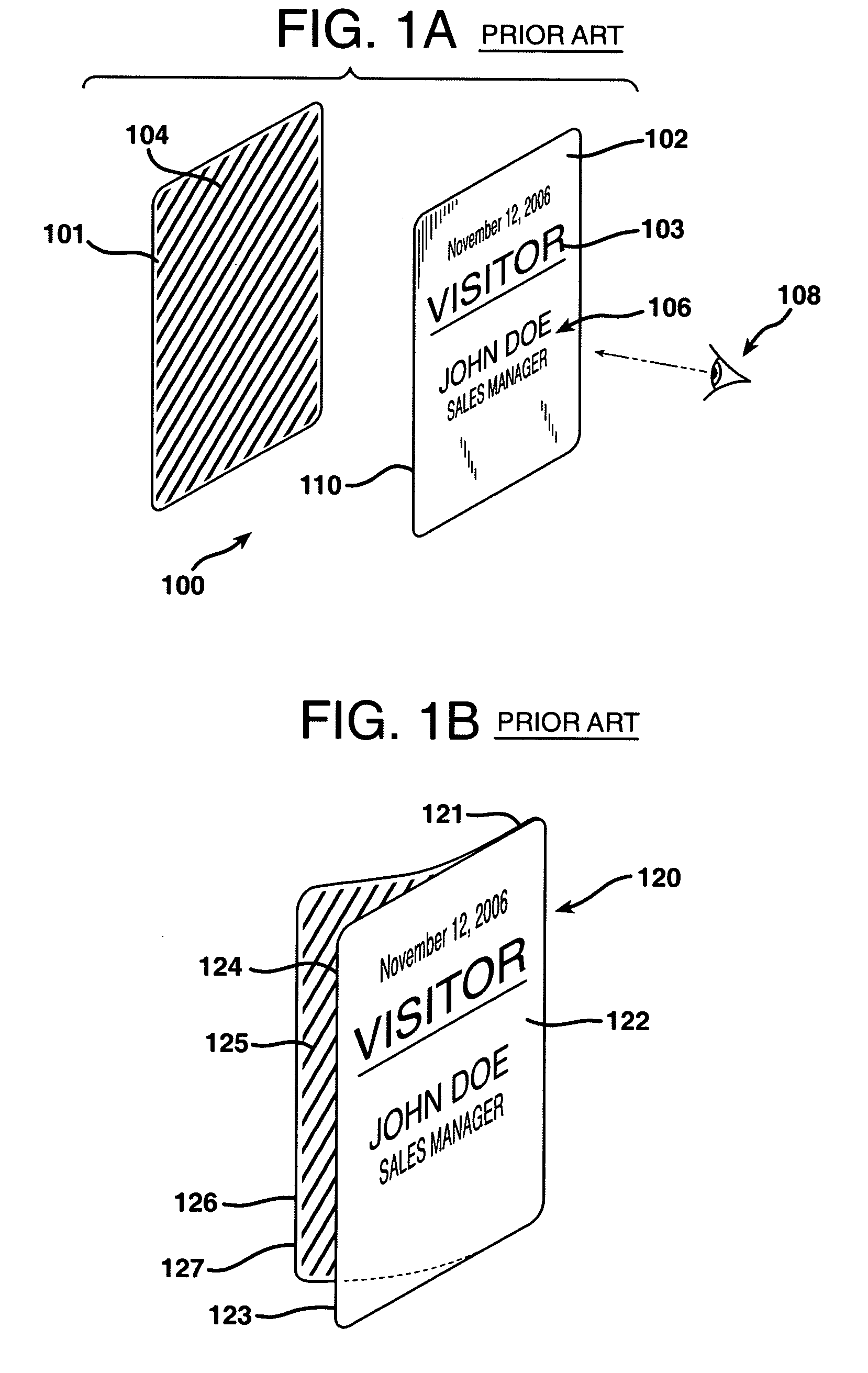One piece self-expiring security badge or label
a security badge or label, one piece technology, applied in the field of self-expiring security badges, labels, tickets and passes, can solve the problems of inconvenient and laborious two-part construction, pedicano, pre-assembled badges or labels, etc., and achieve the effect of easy stacking and storage, and easy passage through laser or thermal printers
- Summary
- Abstract
- Description
- Claims
- Application Information
AI Technical Summary
Benefits of technology
Problems solved by technology
Method used
Image
Examples
Embodiment Construction
[0047]FIG. 1A depicts a prior art self-expiring security badge or label 100 having a two-part construction. In this type of badge or label 100 the top substrate 102 consists of a clear substrate with a special opaque, e.g., white, adhesive coating on its back surface. The front or top surface of the top substrate 102 is typically printed with the security indicia 103 or design indicia 106 as viewed 108 from the front, and has an adhesive backing 110. The bottom substrate 101 includes a migrating ink pattern or indicia 104 printed on its front surface. When the self-expiring badge or label is activated by placing the top substrate 102 adhesive 110 in contact with the bottom substrate 101, the migrating ink 104 diffuses through the adhesive 110 and becomes visible to the observer 108 through the front face 102 of the badge or label 100. Thus, the initial opaque or white (valid) security badge 100 turns into the ‘visually void’ badge.
[0048]An improved version of this two-part construct...
PUM
 Login to View More
Login to View More Abstract
Description
Claims
Application Information
 Login to View More
Login to View More - R&D
- Intellectual Property
- Life Sciences
- Materials
- Tech Scout
- Unparalleled Data Quality
- Higher Quality Content
- 60% Fewer Hallucinations
Browse by: Latest US Patents, China's latest patents, Technical Efficacy Thesaurus, Application Domain, Technology Topic, Popular Technical Reports.
© 2025 PatSnap. All rights reserved.Legal|Privacy policy|Modern Slavery Act Transparency Statement|Sitemap|About US| Contact US: help@patsnap.com



